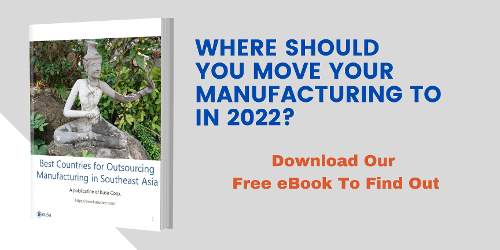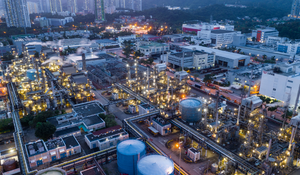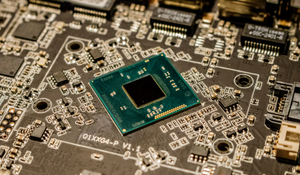In a previous blog article, we explored the opportunities of outsourcing manufacturing in Southeast...
Why Electronic Manufacturing Not Coming Back to the US
In the wake of President Trump’s tariffs on some Chinese products and calls from environmentalists and human right activists, many observers have predicted the return of manufacturing back to the US soil, a phenomenon called “reshoring”. This article is about why we think at Kusu that Electronic Manufacturing is probably not coming back to the US in the near future.
When I started in electronic manufacturing in the 80s, the industry was dominated by large vertically integrated corporations such as IBM, HP, Digital Equipment in the US, Fujitsu in Japan and Siemens in Germany. In the 70s a few US companies (and later European and Japanese) started to outsource selected manufacturing activities to independent firms (non-captive). One of these activities was the manufacturing of Printed Circuit Boards -- which tends to be “dirty” with chemical processes and the presence of heavy metal including among others copper, lead, nickel, zinc etc.
As a young industry, Printed Circuit Board manufacturing was also characterized by what is called “tribal knowledge”. By the end of the 80s there were no captive shops left and the know-how had transitioned from these large OEMs to independent subcontractors. The industry flourished throughout the 90s with the boom of personal computers, printers and later cell phones.
Baby boomer engineers born between 1946 and1964 were plentiful. They were hard working, disciplined, possessed strong work ethics, equated authority with experience and were very often defined by their jobs. This generation built strong profitable companies that grew the consumer electronic industry from the ground up.
After the 2001 recession the migration of PCB manufacturing towards China and some parts of Southeast Asia accelerated and US engineers were sent overseas to places like Shenzhen, Shanghai or Suzhou to train local (and often very young) engineers. By 2010 the first baby boomers started to retire and took their experiences with them after training their counterparts in Asia.
Today the technology is too complicated and it is impossible for an OEM (Original Equipment Manufacturer) to possess all the necessary skills. As an example Apple's strategy has been from their early days to turn to specialists to subcontract the manufacturing of their products.
These gigantic contract manufacturers (Foxconn, Flex, Jabil) have localized their plants in Mexico, China, Southeast Asia and Eastern Europe to take advantage of the abundant labor force with characteristics quite similar to the baby boomers’.
In the meantime in the US Generation X (born 1965-1980) and later Millennials (born 1981-1994) turned to different careers. They are entrepreneurial, independent, tech-savvy and value work-life balance. They went to IT, software, finance, healthcare or services but definitely not to manufacturing, which has created the labor shortage situation we are facing today.
40% of baby boomers have already retired. Coming back from Singapore, where workers are very young, I was shocked by the seniority of our US workforce.
Who will replace them?
Even if companies move their manufacturing back to the US the skillsets are not there anymore.
High volume electronic manufacturing is characterized by steep and unpredictable production ramp-up and short product life cycle unlike any other industries. Automation and expensive toolings are therefore not the panacea to reduce production costs and meet customer expectations in developed countries. By the time you complete your fully automated production line a new revision is already ready to be launched. Flexibility, agility and adaptability are some of the central traits of electronic manufacturers. A fully manual line can be reconfigured in a few hours while a highly roboticized production line can take months or even years to complete and requires massive investment.
Another factor which is routinely overlooked by analysts is the power of financial performance ratios used by US investors and more specifically the Capital Efficiency Ratio. It measures how much a company is spending on growing revenue and how much they are getting in return. By outsourcing, manufacturing companies minimize their investment (no plants, no machines) and maximize their return by pressing on their suppliers.
Talent shortage, aging workforce, investors hesitancy, strict environmental regulations, the list goes on. Why would a company bring back its manufacturing to the US? Taiwan electronics manufacturer Foxconn's retreat from a $10 billion project in Wisconsin in April 2021 is a reminder that tax incentives are no replacement for comprehensive industrial policies.
-1.jpg?width=146&height=50&name=Kusu%20(1)-1.jpg)




